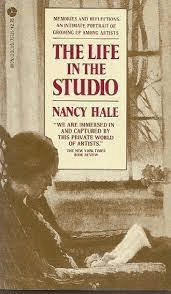
Once upon a time, a bookstore owner and author of a bibliomemoir (possibly Shaun Bytell), complained about the stickers on discarded library books. “They deface the book,” he said bluntly. I, a common reader, am also dismayed by the library-book stickers, which are taped onto the covers with tough plastic that is almost impossible to remove. The texture of the stickers interferes with my reading: they also keep screaming, “I am a borrowed book!”
These stickers conceal, or perhaps are layered with, purposeful electronics: a loud siren is activated at the exit gates if the scanner technology detects an unchecked-out library book. Personally, I have set off the screaming gates by simply browsing in the fiction section near the gate.

Am I the only one wary of too much exposure to electronics? Remember when we knew that phones caused brain cancer? And when the Canadian study proved that computers could harm pregnant women? How quickly everyone forgets. And so one wonders about the stickers and the scanner gates: are they bad for our health?
The other day I was trying to read a mass market paperback library book. Half of the back cover and one-quarter of the top front cover and the spine were covered with what I call scanner stickers. I decided to remove the unsightly stickers, which actually were unpleasant to touch. But removing the stickers was easier said than done.
First, I did not dare use a letter opener or knife. One imagines little electronic bits flying around the room. So I simply cut off part of the back cover and part of the front cover with scissors, and buried them in the trash. In other words, I cut off the scannable stickers. I could not, however remove the spine stickers. Yet it gave me great satisfaction to read the book after the main stickers were removed. Though of course there is still the ISBN number stamped on the book.by the publisher. Well, one cannot worry about everything. And, yes, I will pay the fine for the book. I will say it is “lost.”

If only it were a better world…. All this security is a headache. Do we really need it? Perhaps the librarians could take a chance on freeing the mass market paperbacks from stickers. The mass market books are very cheap: if they vanish, they are easily replaced. But on the hardcover books, yes, they may need the stickers, because these books are more valuable. I looked for stats online about stolen library books, but could find nothing helpful.
I did learn, however, that the chips in the stickers are known as Radio Frequency Identification Tags (RFID). They are ubiquitous in our culture we use them in hotel keys, passports, library cards, store merchandise, etc.
One librarian at Quora, Brian Collier, commented:
This is difficult to answer accurately because there isn’t an international or even national report on library loss rates from different countries (or states in the US). Most libraries track their own loss rates but don’t report them to anyone outside their institution, or perhaps their network if they’re part of a larger body.
That said, the ALA (the national library organization in the US) offers a brief answer on their Loss Rate page, mentioning studies collected in a 1986 book that concluded “there is a loss of .15% to .5% per year.” The same page also mentions the 1998 book Managing Overdues by Patsy J. Hansel that posits “a national ‘overdue rate’ of .7% pre-automation and .4% for post-automation to suggest a national loss of 6.28 million items…
One wonders what was wrong with the old-fashioned check-out system: cards tucked in envelopes on the endpages, with your name written in pencil and the due date stamped by the librarian? That was a simpler, quicker , much cheaper means of check-out. Mind you, I know we’re not going back to that. But all this to-do about security at the library! Have a little faith! People must have gotten much worse than the days when a simple card-and-pencil were adequate for check-out!

































